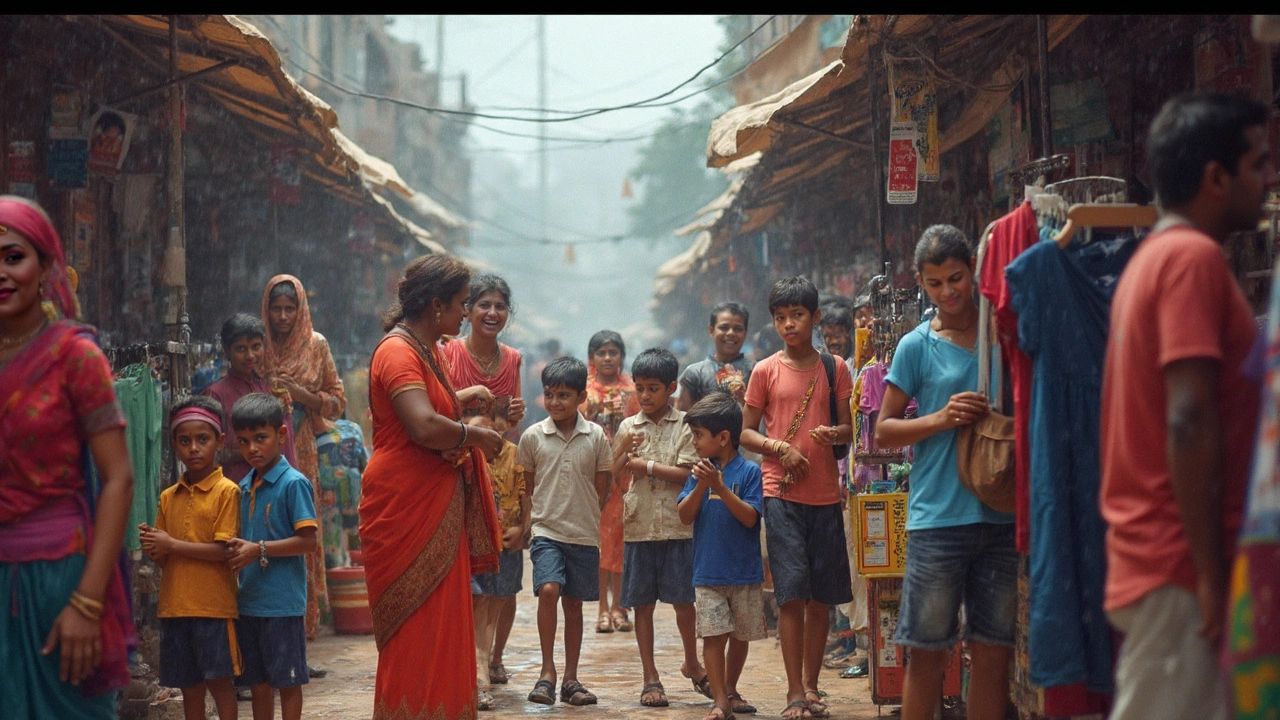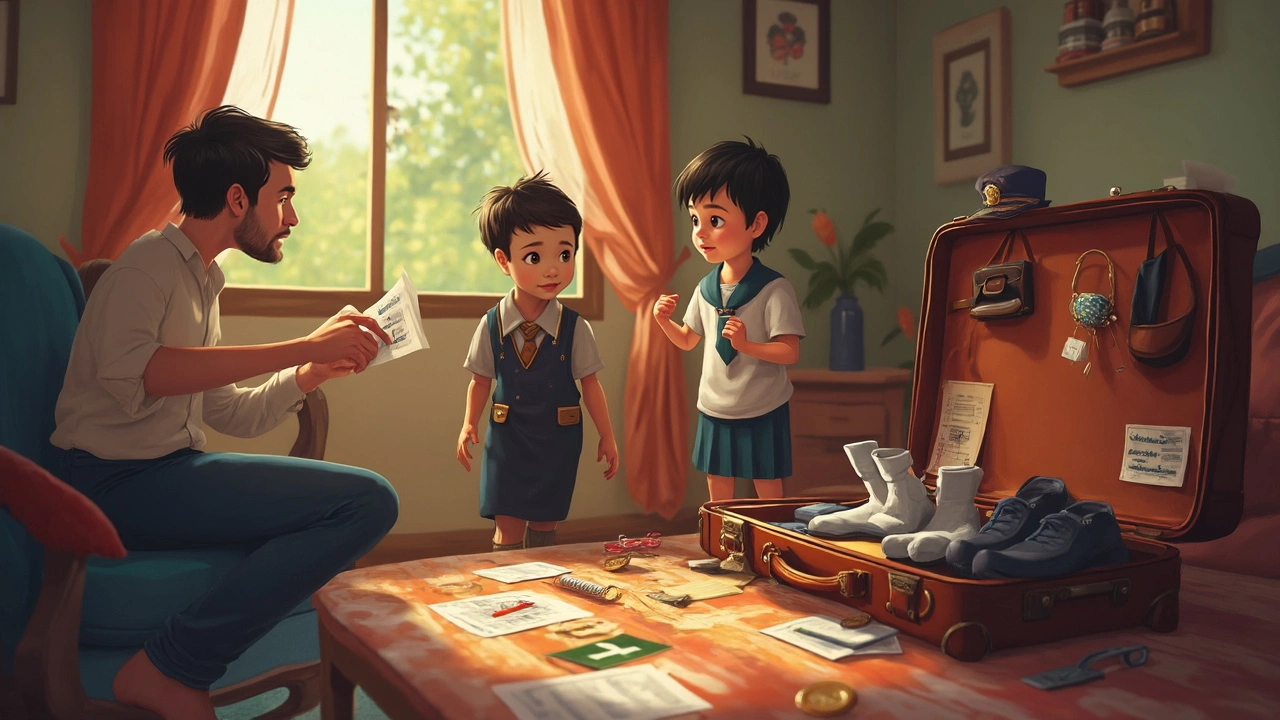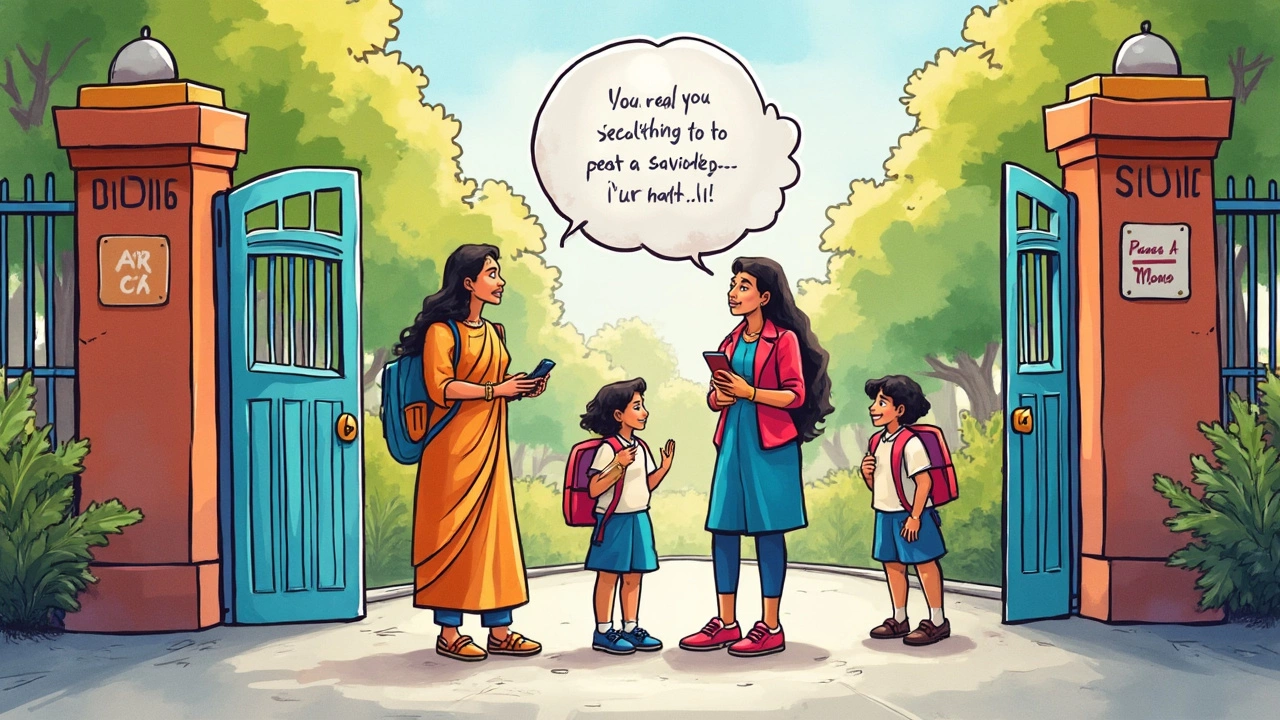Are School Uniforms Expensive? A Realistic Breakdown

The first time you shop for school uniforms, it’s easy to get sticker shock. One plain shirt can cost as much as three regular t-shirts, and that’s before you factor in the right pants, skirts, and shoes. But is the hype about uniforms being pricey really true—or just another classic back-to-school complaint?
Uniform costs depend on more than just the store tag. Brand, fabric, and how specific your school’s dress code is all play a big role. Some schools want custom logos on every top, others insist on specialty shoes. It adds up—sometimes way more than you’d expect if you’re coming from a no-uniform district.
Parents always ask, is it worth the money? The truth isn’t black-and-white. Some families end up spending less on clothing by sticking to a set list, while others find themselves shelling out for extras like PE kits and winter gear. Let’s dig into where the money really goes, how to spot extra charges, and what tricks actually help save a bit when uniforms are non-negotiable.
- What Makes Uniforms Costly?
- Comparing Uniform Prices: Public vs Private
- Where the Extra Costs Sneak In
- Ways Parents Actually Save
- Smart Shopping Tips and Resources
What Makes Uniforms Costly?
When you’re staring at your receipt after shopping for school uniforms, you might wonder why the total looks so steep compared to buying regular clothes. There are a few good reasons this happens, and most are right there hiding in plain sight.
First up, custom and branded items drive up the price. Schools often want their logo on everything from polos to blazers. These items usually can’t be found at big discount stores, so you have to buy from official suppliers or specially approved shops. That makes cost jump fast.
Let’s talk fabric and durability. Schools want uniforms that can survive rough playground time and weekly washing, so clothes are made with thicker, tougher materials. These last longer, but they’re pricier than standard fabric you’d buy for a weekend shirt.
Then there’s the need to buy multiples. Most schools recommend at least two shirts and two pairs of pants or skirts—some families buy even more to avoid constant laundry loads midweek.
For parents who like to see those numbers, here’s a price comparison table. This info comes from public supplier data and popular school uniform retailers:
| Uniform Item | Average Price (USD) | Notes |
|---|---|---|
| Polo Shirt with Logo | $18 - $32 | School embroidery pushes cost up |
| Pants or Skirt | $20 - $38 | Heavier fabric for durability |
| Sweater or Blazer | $25 - $60 | Logos and required colors |
| Shoes (black, official) | $35 - $80 | Schools often require a particular style |
| Gym/PE Kit | $15 - $40 | Special shirt and shorts or tracksuit |
And if you’ve got more than one child in uniforms? Multiply everything. It’s clear why costs snowball so quickly.
What about buying elsewhere? Some schools are picky about where you purchase—so trying to swap in cheaper options doesn’t always work. Plus, out-of-stock items mid-year can send you scrambling to pricier boutique shops in a pinch.
- Custom logos – Can’t substitute with plain clothes
- Durable fabrics – Quality = higher price
- Multiples are a must – One of each won’t cut it
- Shoe rules – Often strict and specific
This breakdown helps explain why families sometimes feel uniforms are a bigger investment than they first expect.
Comparing Uniform Prices: Public vs Private
You’d think school uniforms cost about the same everywhere, but the gap between public and private schools can be huge. Let’s get straight to the point—private school uniforms often come with a much higher price tag, and it’s not just the blazer that runs up the bill.
Public schools usually keep things simple: a polo and pants, maybe a logo patch. Private schools usually set strict rules on logos, fabric types, ties, specialty blazers, or use shops where only certain items count. Here’s a quick look at the costs:
| Item | Public School (USD) | Private School (USD) |
|---|---|---|
| Polo Shirt | $10 - $20 | $25 - $50 |
| Pants/Skirt | $15 - $30 | $35 - $70 |
| Blazer/Jacket | Rarely required | $80 - $200 |
| Shoes | $20 - $50 | $40 - $120 |
| Total Starter Set (3 tops, 2 bottoms, 1 pair shoes, 1 jumper) | $90 - $220 | $250 - $600+ |
The difference gets bigger when you factor in “extras” like dress shoes, specialty socks, gym gear with logos, and winter outerwear that matches the uniform code. With public schools, you can usually buy generic pieces at big-box retailers or even secondhand shops, which helps keep costs down. School uniforms at private schools, though, often must be bought from approved suppliers or branded uniform stores, and some schools require you to order everything new—even socks.
- Public schools tend to have flexible sourcing—you can mix in hand-me-downs and still be within dress code.
- Private schools watch for tiny details, and students often get “dress code violations” for small variations, so you’re forced to buy official stuff.
Some private schools offer ‘used uniform’ sales, but the availability and savings vary. A 2024 survey of U.S. parents by the National Association of Elementary School Principals found that 68% of public school families spent under $150 a year on uniforms per child, while 57% of private school families spent over $350 per year, not including shoes.
Bottom line: where your child goes to school makes a huge difference in how much you’ll shell out for uniforms and the wiggle room you’ve got to save.

Where the Extra Costs Sneak In
It isn’t just the shirt, tie, and pants you need to budget for—extra expenses have a way of sneaking up once school uniform season kicks in. Let’s be real, most schools don’t stop at the basics. Suddenly, you’re buying branded cardigans, sports gear, and even the “official” school-approved socks.
Many parents don’t realize some of these add-ons are non-negotiable. For example, schools often require PE kits in school colors and with logos—sometimes only available at a specific shop. On top of that, there’s the extra pair of shoes for gym days, special-occasion blazers, and in some high schools, lab coats for science class. Lost a tie or got a note about a skirt being “too short”? That’s another trip to the uniform store.
Here’s a quick look at common hidden costs that bump up the final bill:
- PE/sports kit, including trainers or specialty shoes
- Winter gear like branded jackets, beanies, or scarves
- School bags with logos (some schools are strict about this)
- Replacement items for lost, torn, or outgrown pieces
- Special uniforms for field trips, band, or other activities
- Seasonal items, like summer dresses or shorts (usually required)
If you’ve ever looked at the yearly tally and thought, “How did it add up so fast?” — you’re not alone. A 2024 survey in the UK showed families spent on average £287 per child on uniforms for secondary school, while younger kids weren't far behind at £223. It’s not unusual for parents in the US to spend anywhere between $150 and $400 per year, especially when schools list specific shoes and winter gear as mandatory.
| Uniform Item | Average Cost (USD) |
|---|---|
| Polo shirt with logo | $12–$25 |
| Dress pants/skirt | $18–$30 |
| PE kit (top & shorts) | $25–$60 |
| Official school shoes | $40–$80 |
| Winter jacket (school branding) | $35–$100 |
Don’t forget, the strictness of the dress code also matters. Private schools or academies usually demand branded items, which are way pricier and harder to swap or buy secondhand. Even public schools sometimes have partnerships with uniform suppliers, limiting your options for cheaper alternatives.
If you're getting ready for back to school, double check the full uniform list—not just the basics. Those little extras often hurt the most. Planning for them early can keep you from scrambling right before the first bell.
Ways Parents Actually Save
Plenty of families look at their school uniform budget and get creative to keep costs down. The good news? You don’t have to buy everything brand new, and you can skip over some of the stress that comes with back-to-school shopping if you know a few key tricks.
First off, secondhand sales are a huge money-saver. Many schools run uniform swaps, thrift shops, or Facebook groups just for parents to hand down outgrown blazers, ties, and everything in between. No one’s going to care if those trousers have seen a few playgrounds before—they’re built to last.
Another simple way to save: bulk buying. Some online retailers and big box stores offer discounts if you grab two or three packs of shirts or pants at once. Pair those deals with seasonal sales in August or January, and you can knock a chunk off your bill.
| Money-Saving Method | Possible Savings per Year (USD) |
|---|---|
| Secondhand Uniform Sales | $80–$200 |
| Uniform Swaps/Hand-Me-Downs | $50–$150 |
| Bulk Buying During Sales | $30–$100 |
| Buying Generic Uniform Pieces | $25–$60 |
You don’t have to get every piece from the official supplier either. Stuff like socks, plain shirts, and sometimes even pants or skirts are totally fine from stores like Walmart, Target, or even Amazon. Just double-check the school’s color code and fabric rules, and you’re good to go.
- Check your school’s Facebook groups or bulletin board for notices about upcoming swaps or sales.
- Load up on the basics during end-of-season clearance events—grab next year’s sizes to save later.
- Label everything you buy (sharpies, iron-on labels, etc.) so you don’t have to replace lost gear halfway through the year.
- Don’t forget to compare prices for mandatory extras like gym gear and shoes. Sometimes sports stores or warehouse chains beat school suppliers by a mile.
Families who stay organized with their back-to-school list and look for deals typically spend 20–30% less on school uniforms each year. A bit of extra work up front can save real money, letting you splurge somewhere else—or just keep your stress level down when September rolls around again.

Smart Shopping Tips and Resources
Shopping for school uniforms doesn’t have to drain your wallet if you’re strategic about it. Prices can swing a lot depending on where you look and whether you’re open to new or secondhand gear. According to the National Retail Federation, American families spent an average of $150 per child on school uniforms in 2024, but smart buyers often spend a lot less by mixing things up and checking for deals before rushing into purchases.
It’s easy to get pulled into pricey “official” uniform shops, but most big box retailers like Target and Walmart now carry basic styles approved by many schools. For those open to gently-used options, thrift stores and online marketplaces like Facebook Marketplace, eBay, and local uniform swap groups can mean big savings.
“Buying used uniforms or sharing with other families not only saves cash, but also helps the environment,” says Jessica S., a PTA organizer who has run a uniform exchange in New Jersey for five years. “Kids grow fast, and their old uniforms usually have plenty of life left in them.”
- Check your school’s rules carefully—often, off-brand items from regular stores are allowed as long as they match colors and basic style.
- Buy early in the summer. Sales and stock tend to dry up once back-to-school rush hits in August.
- Consider buying a size up for shirts and pants, so they’ll last more than one growth spurt.
- Hit up end-of-season clearance racks for next year’s stock if your school sticks with the same color scheme year after year.
- Keep receipts—you might need exchanges if your kid’s growth spurt surprises you mid-year.
Here’s a quick look at what you might pay by shopping around. The bolded row shows average costs for school uniforms across sources:
| Source | Average Shirt Price | Average Pant/Skirt Price |
|---|---|---|
| Official Uniform Store | $18 | $25 |
| Big Box Retailer | $8 | $14 |
| Thrift / Swap | $3 | $5 |
Don’t forget about simple hacks: iron-on patches fix up scuffed knees, and stain remover sticks are lifesavers for white polos. If your school has a swap night, put it on your calendar. A few minutes there can mean you pick up a whole year’s wardrobe for the cost of lunch.